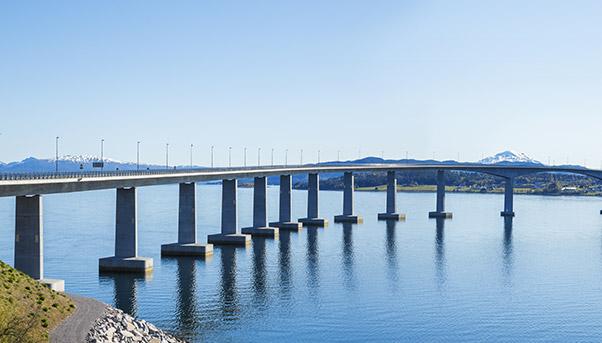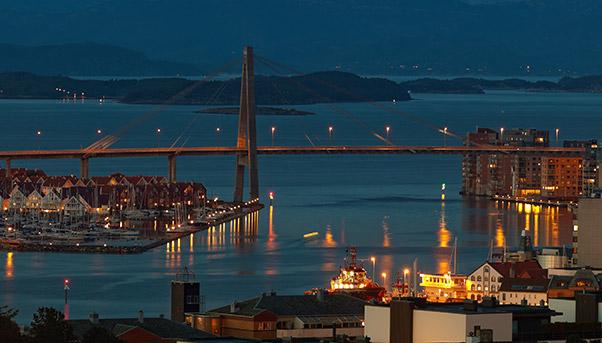
The highway being built by Norway along its famous fjords is bound to give drivers the sensation that they have embarked on a futuristic journey. Amid the green cliffs that plunge into the waters of the North Sea, they will follow an asphalt ribbon that crosses suspension bridges and passes through submarine tunnels in the safety of the latest technology in infrastructure, some of which is being applied for the first time in this engineering feat.
At a cost of 340 billion Norwegian krones ($40 billion), this visionary project of the Norwegian government will radically improve the long journey between Kristiansand to the south and Trondheim to the north in one of the most fascinating regions of the world.
The Deepest Tunnel in the World
The biggest challenge will be the construction of bridges and underwater tunnels to eliminate the need for ferries to carry vehicles across the waters between the fjords. In fact, it is a challenge within a challenge because these new crossings will have to take into account the extreme depths of the fjords as well as maritime traffic.
Construction of the first underwater tunnel at a cost of about 16.8 billion Norwegian krones ($1.9 billion) began in late 2017. Named the Rogfast, it will link the city of Stavanger with that of Bergen, reducing travel time by 40 minutes. At 26.7 kilometers, it will be the longest and deepest underwater tunnel in the world (392 meters below sea level) when it is completed in 2026.

Improving the E39
Although the highway can be described as new, in some parts it will serve as an extension of the E39, which runs for 1,100 kilometers but is interrupted seven times by ferry crossings. It connects six regions with a population of 1.8 million people and – according to the Norway Public Road Administration – accounts for 7% of national car traffic alone. The volume of traffic varies along its length. In some places, it does not exceed 1,000 vehicles per day, while in others – such as the cities of Stavanger and Bergen – it reaches 70,000.
The new highway will reduce congestion at critical points.
But it will be its impact on travel times that will be the most significant: from 21 hours on the old route to just 10 hours. The impact on cost will also be notable. According to the Norway Public Road Administration, the general cost of bringing goods from one end to the other will go down by 50%.
Innovation and Security
From tunnels to bridges, cities to villages, travelling along the new fjord highway promises to be a unique experience. In a radius of a few kilometers drivers will pass from the underwater crossing of Rogfast to the Sulafjorden bridge that will connect two shores four kilometers apart. There will also be the “jump” at Sognefjord, the largest fjord in Norway (3,700 meters wide and 1,300 deep) that calls for the construction of both underwater tunnels and bridges.
A focus on safety will ensure that the passage of cars through the underwater tunnels is constantly monitored remotely.
Protection of the environment is also paramount. Solar panels, for example, will power both the surveillance centres positioned along the highway, as well as recharge the electric vehicles that will travel along it.

